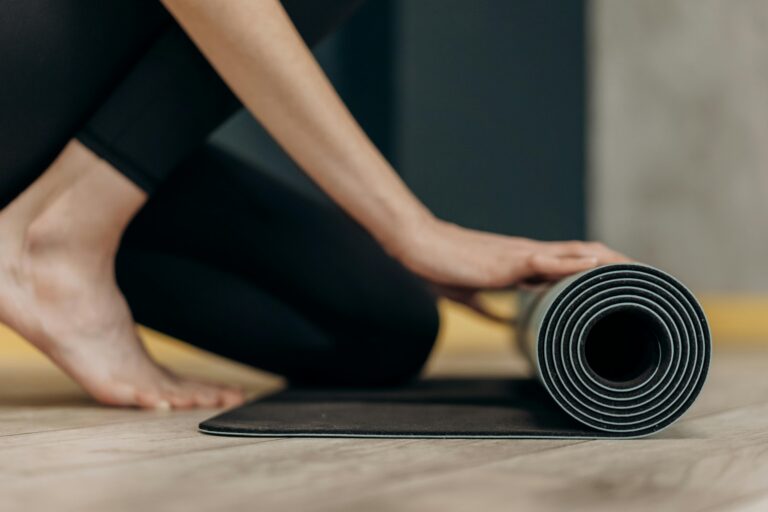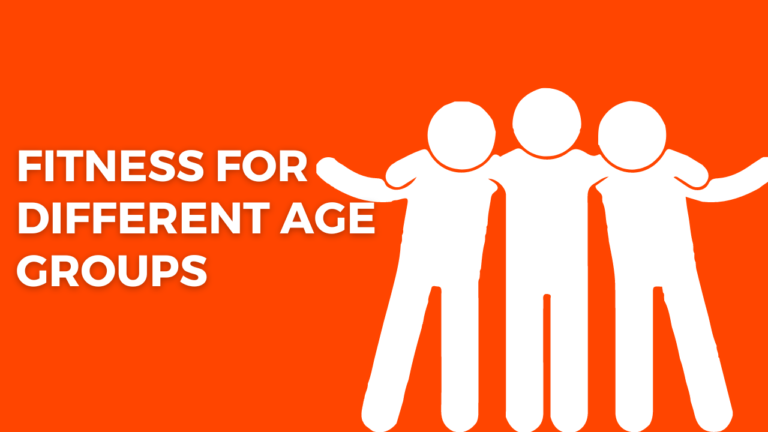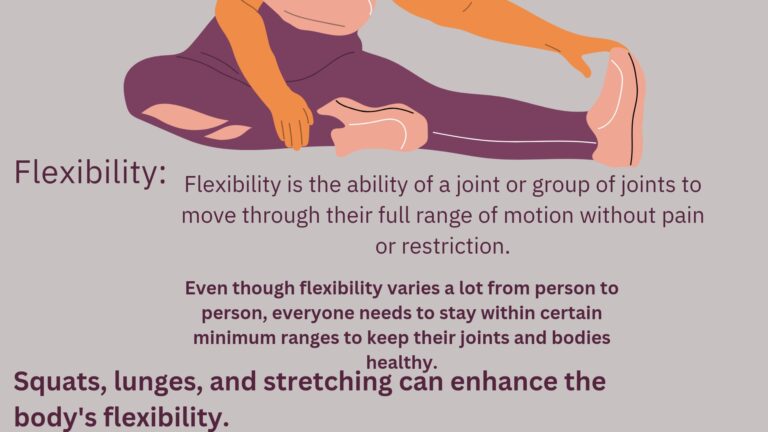Sweat the Stress Away: 7 Stress-Reducing Exercises
Introducing exercises
Introduction
Introducing exercises into your routine can be a powerful strategy to alleviate stress and boost your overall well-being. Stress can accumulate due to various factors, from work pressures to personal challenges, but engaging in physical activities can serve as an effective outlet to release tension and promote relaxation.
In this guide, we’ll explore seven stress-reducing exercises that cater to different preferences and fitness levels. These exercises are designed not just to help you break a sweat, but also to elevate your mood, improve focus, and enhance your mental resilience.
Remember, finding the right exercise routine is a personal journey. Whether it’s the calming effect of yoga, the invigorating nature of cardio workouts, or the mindfulness of tai chi, there’s an exercise suited to your preferences that can become a powerful tool in managing stress.
So, let’s dive into these stress-reducing exercises and discover how they can become your allies in combating stress, allowing you to rejuvenate your mind and body.
Understanding the Relationship between Exercise and Stress
The connection between exercise and stress is intricate and impactful, influencing both physical and mental well-being. Exercise serves as a potent tool to combat stress, playing a crucial role in managing its effects on the body and mind.
When you engage in physical activity, your body releases endorphins, neurotransmitters that act as natural mood elevators. These endorphins interact with the brain receptors, reducing the perception of pain and triggering positive feelings, creating what’s often referred to as a “runner’s high” or a sense of euphoria.
Moreover, exercise can help regulate the body’s stress response by reducing the production of stress hormones like cortisol and adrenaline. Regular physical activity can contribute to a lowered baseline level of these hormones, making you more resilient to stressors over time.
Furthermore, exercise promotes better sleep, which is crucial in managing stress. Quality sleep allows the body to repair itself and helps regulate mood, cognitive function, and overall health. Exercise can aid in falling asleep faster and achieving deeper, more restorative sleep.
Beyond these physiological effects, engaging in exercise provides an opportunity for distraction and a break from the stressors of daily life. Focusing on the physical activity at hand can divert attention away from worries and rumination, offering a mental respite and a chance to recharge.
Different types of exercise can have varying impacts on stress reduction. While aerobic exercises like running, cycling, or swimming are known for their endorphin-releasing effects, activities like yoga, tai chi, and Pilates emphasize mindfulness, incorporating breathing techniques and meditation that can directly reduce stress levels.
However, it’s important to find a balance. Too much exercise without adequate rest can lead to physical fatigue, potentially adding to stress levels. Striking a balance between activity and recovery is key to reaping the stress-relieving benefits of exercise.
In summary, the relationship between exercise and stress is multi-faceted. Regular physical activity can alleviate stress by releasing endorphins, regulating stress hormones, improving sleep, and providing a mental break. Understanding this connection empowers individuals to use exercise as a powerful tool in managing and reducing stress in their lives.
Seven Sweat-Inducing, Stress-Reducing Exercises
Absolutely, here are seven sweat-inducing, stress-reducing exercises that can significantly help in managing stress levels:
Running or Jogging: This classic aerobic exercise not only gets your heart pumping but also releases endorphins, improving mood and reducing stress. Whether it’s a brisk run outdoors or on a treadmill, consistent jogging can be an excellent stress-reliever.
Yoga: Known for its combination of physical postures, breathing techniques, and meditation, yoga is incredibly effective in reducing stress. It encourages relaxation and mindfulness, fostering a sense of calmness while also enhancing flexibility and strength.
High-Intensity Interval Training (HIIT): HIIT workouts involve short bursts of intense exercises followed by brief rest periods. These sessions can be incredibly effective for stress reduction due to their ability to release endorphins and improve overall fitness in a short amount of time.
Cycling: Whether indoors on a stationary bike or outdoors on a cycling trail, pedaling away can be an excellent stress-buster. Cycling not only improves cardiovascular health but also allows for a change of scenery, adding a refreshing element to your exercise routine.
Dance Workouts: Dancing is not only a fun way to exercise but also a great stress-reliever. Joining a dance class or following dance workout videos allows you to move to the rhythm, releasing tension and boosting mood through music and movement.
Tai Chi: This gentle form of exercise originating from martial arts involves slow and deliberate movements combined with deep breathing. Tai Chi promotes relaxation, balance, and mindfulness, making it a fantastic stress-reducing practice.
Swimming: Immersing yourself in water and engaging in swimming laps can be an excellent full-body workout. The rhythmic strokes and controlled breathing in swimming can help calm the mind and reduce stress while also providing a low-impact exercise option.
Incorporating any of these exercises into your routine, based on your preferences and fitness level, can be instrumental in managing stress. Remember, consistency is key—regularly engaging in physical activity will yield the best stress-reducing benefits. Always listen to your body and choose activities that you enjoy to make exercise a sustainable part of your lifestyle.
Yoga: A Mind-Body Workout
Yoga is a holistic mind-body practice that combines physical postures, breathing exercises, meditation, and relaxation techniques. Originating in ancient India, yoga has evolved into various styles and forms, all aimed at promoting overall well-being. At its core, yoga emphasizes the connection between the body, breath, and mind. Through a series of poses or “asanas,” practitioners engage in movements that enhance flexibility, strength, and balance. These postures are often combined with controlled breathing techniques, known as “pranayama,” which help focus the mind and calm the nervous system.
The mindfulness cultivated in yoga is a key aspect of its stress-reducing benefits. By directing attention to the present moment—synchronizing movement with breath—yoga encourages a state of mental calmness and awareness. This mindfulness practice can help individuals manage stress, reduce anxiety, and improve their overall mental well-being. Moreover, yoga incorporates relaxation and meditation practices. Techniques such as “sav asana” (corpse pose) allow for deep relaxation at the end of a session, promoting a sense of rejuvenation and reducing tension. Meditation, often integrated into yoga sessions, encourages mental clarity and emotional balance, further aiding stress reduction.
The benefits of yoga extend beyond the physical and mental realms. Regular practice has been associated with improved sleep quality, better immune function, reduced inflammation, and enhanced overall vitality.
Yoga is highly adaptable, with various styles catering to different preferences and fitness levels. From gentle forms like Hatha yoga to more vigorous styles such as Vinyasa or Power yoga, there’s a wide spectrum to choose from. Additionally, modifications and props can be used to accommodate individual needs, making yoga accessible to almost everyone.
Overall, yoga serves as a comprehensive mind-body workout, offering not just physical fitness but also mental relaxation and emotional balance. By cultivating mindfulness, breathing awareness, and physical movement, yoga becomes a powerful tool in managing stress and enhancing overall well-being.
Running: The Ultimate Stress Reliever
Running is often hailed as an effective and accessible stress-relieving activity that offers numerous benefits for both the body and the mind. It’s a straightforward form of exercise that doesn’t require expensive equipment or a specific setting, making it convenient for many people.
Here’s why running is often considered the ultimate stress reliever:
Endorphin Release: Running triggers the release of endorphins, often referred to as “feel-good” hormones. These neurotransmitters interact with receptors in the brain, reducing pain perception and creating a sense of euphoria or well-being. The resulting “runner’s high” can significantly reduce stress and elevate mood.
Mindfulness and Stress Reduction: While running, individuals often experience a meditative state or a “flow” where they become fully immersed in the activity. This focused attention on the present moment can act as a natural stress reliever, allowing the mind to break away from stressors and worries.
Physical Benefits: Running is a great cardiovascular workout that helps improve heart health, strengthen muscles, and boost endurance. Regular running can also lead to better sleep patterns, which are essential for stress management and overall well-being.
Stress Release through Physical Exertion: Engaging in physical activity like running helps dissipate physical tension in the body. It allows for the release of built-up stress and pent-up energy, leading to a feeling of relaxation and reduced stress levels post-exercise.
Time for Reflection: For many runners, the time spent running serves as a period for introspection and reflection. It can be an opportunity to think, process thoughts, and gain clarity on different aspects of life, contributing to mental relaxation and stress relief.
However, it’s important to note that while running can be highly beneficial for stress relief, it’s essential to listen to your body and avoid overexertion. Pushing yourself excessively or running beyond your physical limits can lead to burnout or injuries, which might add to stress instead of alleviating it.
In conclusion, running can indeed be an effective stress reliever due to its ability to release endorphins, promote mindfulness, offer physical benefits, and provide a dedicated time for reflection. When incorporated into a balanced lifestyle, running can serve as an excellent tool for managing stress and improving overall well-being.
Dance Fitness: Combining Fun and Fitness
Dance fitness is a dynamic and enjoyable way to combine exercise with the joy of movement and music. It merges the benefits of cardiovascular workouts with the excitement of dance, offering a fun and effective approach to fitness.
Here’s why dance fitness is considered a fantastic combination of fun and fitness:
Engaging and Enjoyable: Dance fitness routines are designed to be engaging and enjoyable, incorporating various dance styles such as hip-hop, salsa, Zumba, or aerobics. The energetic music and choreography make it feel more like a dance party than a workout, encouraging participants to move and groove.
Cardiovascular Workout: Dance fitness routines typically involve continuous movements that elevate the heart rate, providing an excellent cardiovascular workout. Through a series of rhythmic steps and energetic routines, participants can improve their endurance and stamina.
Full-Body Workout: Dance fitness engages various muscle groups, offering a full-body workout. Movements involve the arms, legs, core, and often incorporate dynamic motions that enhance flexibility and coordination.
Stress Reduction: Engaging in dance fitness can serve as a stress-relieving activity. The combination of music, movement, and social interaction can help release endorphins, the body’s natural mood elevators, reducing stress and boosting mood.
Accessible to All Fitness Levels: Dance fitness classes often cater to different fitness levels and can be modified to suit individual needs. Whether you’re a seasoned dancer or a beginner, there are classes and routines available for everyone.
Social and Community Aspect: Many dance fitness classes are conducted in group settings, fostering a sense of community and camaraderie among participants. The social aspect of dancing together can add an extra layer of enjoyment and motivation.
Mind-Body Connection: Dance fitness encourages a mind-body connection, requiring focus on movements, rhythm, and coordination. This concentration on the present moment can promote mindfulness and stress reduction.
Overall, dance fitness provides an exciting and effective way to stay physically active while having fun. It offers numerous benefits, including cardiovascular health, stress reduction, improved coordination, and a boost in mood. Whether in a studio class or following online routines, dance fitness is a fantastic way to make exercise enjoyable and sustainable.
Boxing: Punching Out the Stress
Boxing is not just a sport; it’s a full-body workout that can serve as an excellent stress-relieving activity. Incorporating elements of cardio, strength training, and mental focus, boxing offers numerous benefits for both physical fitness and stress reduction.
Here’s why boxing is often considered an effective stress-buster:
Release of Endorphins: Engaging in a boxing workout, whether hitting a punching bag, practicing shadowboxing, or sparring, can trigger the release of endorphins. These feel-good hormones reduce stress and promote a sense of well-being.
Physical Exertion: Boxing involves high-intensity movements that engage multiple muscle groups simultaneously. This intense physical activity helps release tension in the body and provides an outlet for pent-up energy and stress.
Cardiovascular Exercise: Boxing workouts typically include elements of cardiovascular exercise, such as jumping rope, footwork drills, and punching combinations. This type of workout can improve heart health and endurance while burning a significant number of calories.
Focus and Mindfulness: Boxing requires concentration and focus on technique and movement. This mental engagement can act as a distraction from stressors, promoting mindfulness and helping individuals stay present in the moment.
Empowerment and Confidence: Learning boxing techniques and improving skills can boost self-confidence and self-esteem. The sense of empowerment gained from mastering new techniques and pushing physical limits can positively impact mental well-being.
Stress Relief through Controlled Physical Activity: The controlled release of energy during a boxing session can be a stress-relieving outlet. Channeling stress into a physical activity that involves controlled and deliberate movements helps manage emotions and reduce tension.
Social and Supportive Environment: Many boxing gyms or classes offer a supportive environment where participants can bond over shared goals. The social aspect of training and working with others can contribute to stress reduction and a sense of community.
It’s essential to approach boxing or any high-intensity workout with proper technique and guidance, especially for beginners. Proper instruction from qualified trainers can ensure safety and effectiveness while reducing the risk of injury.
In summary, boxing provides a high-energy, full-body workout that not only improves physical fitness but also offers stress relief through the release of endorphins, intense physical exertion, mental focus, empowerment, and a supportive community environment. Incorporating boxing into a fitness routine can be an effective way to punch out stress and promote overall well-being.
Strength Training: Lifting Weights, Lowering Stress
Strength training, also known as resistance or weight training, involves exercises that focus on improving muscular strength, endurance, and overall physical fitness. While it might not seem immediately associated with stress relief, strength training offers numerous benefits that contribute to stress reduction and improved mental well-being.
Here’s how strength training can help lower stress levels:
Endorphin Release: Similar to aerobic exercises, strength training can trigger the release of endorphins. These neurotransmitters act as natural painkillers and mood elevators, helping to reduce stress and promote feelings of well-being.
Physical Outlet for Stress: Engaging in resistance exercises provides a physical outlet for stress. Lifting weights or performing bodyweight exercises can help release tension in the muscles, promoting relaxation and reducing physical stress.
Improved Sleep Quality: Regular strength training has been linked to improved sleep patterns. Quality sleep is crucial for stress management, and strength training can contribute to better sleep, aiding in stress reduction.
Enhanced Self-Esteem: As individuals progress in their strength training journey and witness improvements in their physical abilities, it can boost self-confidence and self-esteem. Feeling stronger and more capable can positively impact how one deals with stressors.
Focus and Mindfulness: Concentrating on proper form and technique during strength training exercises requires focus and attention. This concentration can act as a form of mindfulness, helping individuals stay present and diverting attention away from stressors.
Sense of Achievement: Setting and achieving fitness goals in strength training can provide a sense of accomplishment. Celebrating milestones and progress can be a motivating factor and positively influence mental well-being.
Hormonal Balance: Strength training can help regulate hormonal balance, including cortisol levels. Cortisol, known as the stress hormone, can be managed through regular exercise, potentially reducing chronic stress.
It’s important to note that strength training doesn’t have to involve heavy weights or complicated equipment. Bodyweight exercises, resistance bands, or even household items can be used effectively to build strength.
For beginners, starting with proper guidance, gradually increasing intensity, and focusing on correct form are essential to prevent injury and maximize benefits.
In summary, incorporating strength training into a fitness routine offers physical benefits such as increased strength and endurance, but it also contributes to stress reduction by releasing endorphins, providing a physical outlet for stress, improving sleep, boosting self-esteem, promoting mindfulness, and helping maintain hormonal balance.
Tai Chi: The Gentle Way to Reduce Stress
Tai Chi, often described as “meditation in motion,” is a gentle and ancient Chinese martial art that combines slow, flowing movements with deep breathing and mindfulness. It’s renowned for its ability to promote relaxation, reduce stress, and enhance overall well-being.
Here’s why Tai Chi is considered a gentle yet effective way to reduce stress:
Mindfulness and Relaxation: Tai Chi emphasizes mindfulness, requiring practitioners to focus on the present moment and the flow of movements. The slow, deliberate motions, coupled with deep breathing, encourage relaxation and calmness of the mind.
Stress Reduction through Movement: The gentle, continuous movements in Tai Chi help release tension from the body. This slow and flowing exercise promotes relaxation in muscles and joints, offering a physical release of stress.
Balancing the Mind-Body Connection: Tai Chi aims to harmonize the body and mind. By synchronizing movements with breathing techniques, it creates a sense of balance and calmness, which can counteract the effects of stress on both the body and mind.
Promotion of Mental Clarity: Practicing Tai Chi can help clear the mind and improve mental clarity. By focusing on the movements and breathing patterns, individuals often experience reduced mental chatter and an increased sense of mental tranquility.
Stress Management for All Ages: Tai Chi is a low-impact exercise suitable for people of various ages and fitness levels. Its gentle nature makes it accessible to individuals who may find other forms of exercise challenging, allowing almost anyone to benefit from its stress-relieving effects.
Physical Benefits: While Tai Chi is primarily known for its stress-reducing properties, it also offers physical benefits such as improved flexibility, balance, and muscle strength, contributing to overall well-being.
Promotion of Resilience: Regular practice of Tai Chi has been associated with improved resilience to stress. It can equip individuals with coping mechanisms to better manage daily stressors and challenges.
Tai Chi can be practiced individually or in a group setting, often in a calm and peaceful environment conducive to relaxation. Learning from a qualified instructor can ensure proper technique and maximize the stress-relieving benefits of this ancient practice.
In summary, Tai Chi stands out as a gentle and effective method for stress reduction by promoting mindfulness, relaxation, mental clarity, and resilience. Its slow, flowing movements coupled with breathing techniques offer a holistic approach to reducing stress and improving overall mental and physical well-being.
conclusion
In conclusion, various forms of physical activity offer powerful means to combat stress and promote overall well-being. Whether it’s the rhythmic movements of Tai Chi, the high-energy intensity of boxing, the dynamic fun of dance fitness, the strength-building routines of weight training, the serene practice of yoga, the exhilarating rhythm of running, or the diverse benefits of other exercises, each offers unique pathways to stress reduction.
Exercise, in its many forms, stands as a valuable tool in managing stress by:
Releasing Endorphins: Physical activity triggers the release of endorphins, natural mood elevators that reduce stress and promote feelings of well-being.
Physical Outlet for Stress: Engaging in exercise provides a physical outlet for stress, releasing tension from the body and allowing for relaxation.
Promoting Mindfulness: Many exercises encourage mindfulness, allowing individuals to focus on the present moment, diverting attention from stressors, and fostering mental calmness.
Enhancing Physical Health: Regular exercise improves cardiovascular health, muscle strength, flexibility, and overall physical fitness, contributing to stress reduction and a sense of well-being.
Improving Sleep Quality: Quality sleep is vital for stress management, and exercise can improve sleep patterns, aiding in stress reduction.
Boosting Self-Esteem and Confidence: Achieving fitness goals, mastering new techniques, and feeling stronger can boost self-confidence, positively impacting mental health.
Providing a Sense of Achievement: Progress in fitness goals can provide a sense of accomplishment, motivating individuals and positively influencing mental well-being.
Whether it’s the release of endorphins, the physical exertion offering a stress release, the mindfulness cultivated during exercise, or the sense of achievement and well-being gained from progress, exercise offers multifaceted benefits that contribute to stress reduction and an improved quality of life.
Ultimately, finding a physical activity that resonates with personal preferences and fits into one’s lifestyle can create a sustainable path toward stress management and overall mental and physical wellness. Incorporating regular exercise into daily routines can pave the way for a healthier, more balanced life.







